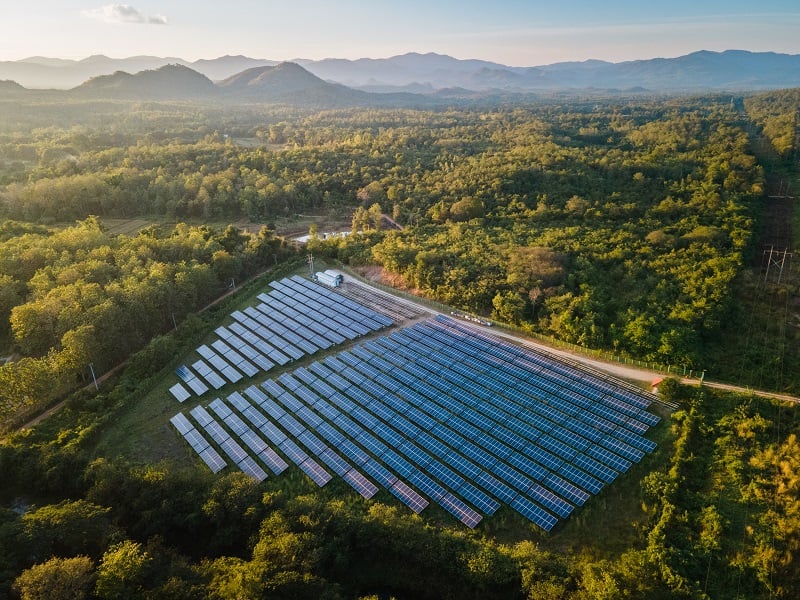
Ella Sexton
Senior Investor Strategies Programme Manager
Our new resource outlines the latest thinking and good practices for investors on addressing the scope 3 emissions of assets, proposing a materiality-based approach with sector- and category-level granularity where possible.
It reiterates the importance of including scope 3 emissions in asset-level climate analysis and provides a route forward for investors amidst numerous challenges.
Following on from our discussion paper, the guidance focuses on how to approach the scope 3 of investors’ category 15 emissions: the value chain emissions of the assets in their portfolios.
This includes the 15 categories of activity, ranging from the emissions generated from the use of a company’s products and services to activities such as business travel and commuting.
Informed by a number of asset owners and asset managers as part of our working group, it outlines then expands on three key messages:
- Investor climate change strategies should not exclude scope 3: it is a vital part of understanding the climate impact of a portfolio and the transition risks it is exposed to
- There are a number of valid challenges that mean it is not initially easy to address: total portfolio scope 3 can be a misleading metric
- Investors are recommended to start by identifying the parts of their portfolio that are most likely to have material scope 3, and then conduct targeted sector- and category- level analysis
Specifically, it offers practical advice for interpreting the scope 3 recommendations of the Net Zero Investment Framework (NZIF) 2.0, now the most widely used guidance by investors who have set a net zero commitment.
Read ➡ IIGCC supplementary guidance: Scope 3 emissions of investments.
A key aspect
Scope 3 emissions represent around 80% of the emissions of high-emitting sectors and are an enormous challenge to analyse; yet are a key aspect of climate transition risk assessments.
With scope 3 reporting not currently compulsory for the majority of the investible universe, accessing data on all 15 categories for every asset would be a huge undertaking for investors. Many typically rely on third-party estimates, with varying degrees of success.
While scope 3 ‘hotspots’ will vary depending on asset class and sector coverage, investors can leverage a table of recommended priority sectors and corresponding scope 3 categories in the guidance before considering their own portfolio scope 3 materiality assessment.
Investors can also refer to an illustrative approximation of the annual absolute scope 3 emissions breakdown by category for several high-impact sectors.
A complex picture
Though the Greenhouse Gas Protocol provides clear guidance for asset-level reporting, the approach is flexible to accommodate different company business models. This leads to inconsistent reporting that is not designed to be comparable – or summable – between multiple entities. It also creates issues for investors who might wish to evaluate climate metrics of multiple companies or to aggregate them to indicate the emissions of an entire fund or portfolio.
Its outsized contribution also means scope 3 is often an important indicator of vulnerability to climate transition risks. It can help investors to identify potential climate risk factors, such as incoming climate legislation or falling consumer appetite for emissions-intensive products.
The resource stresses that scope 3 data is not straightforward: for example, high scope 3 emissions do not always equate to a worse climate impact. Climate solutions providers can appear to have high scope 3, such as companies that contribute to grid flexibility and balancing improvements. These companies are essential for decarbonising electricity grids but can be compelled to account for emissions from the existing fossil-fuel-based grid under scope 3.
Seen in isolation, these investments could be seen as misaligned with decarbonisation targets, despite the significant contribution of these companies to real-economy decarbonisation.
Guiding principles
Acknowledging the challenges and likelihood of uncertainty for some time to come, the resource goes on to list good practice guidance for investors to consider. For instance, attempting to collect complete data for all scope 3 categories for all assets may not be the best use of time and resources. Instead, it suggests conducting a materiality assessment, consistent with the disclosures recommended in the International Sustainability Standards Board (ISSB)’s S1 and S2 standards.
Understanding the context of what is most material to their individual portfolios can help investors to develop targeted asset scope 3 decarbonisation strategies where relevant to their climate objectives. The guidance lists several data sources available to investors to support materiality assessments, including the Climate Action 100+ Disclosure Framework and IIGCC Net Zero Standards.
Our working group reiterated the importance of addressing scope 3 at the asset level and warned of the issues that can come with broad aggregation to the portfolio level - a point made clear in our scope 3 discussion paper.
In fact, the paper explains that aggregation of asset-level scope 3 into a portfolio decarbonisation target is usually inconsistent with mitigating climate change and its associated risks in the real economy and for investors.
The paper recommends sing qualitative as well as quantitative data; taking a sector- and company-specific approach where possible; being transparent; and staying up to date with evolving market practices and regulations, with the latest thinking offered on each.
As thinking evolves, we will continue to work with our members on how to approach this topic. But what is clear is that the value of scope 3 emissions reporting in material areas should not be overshadowed by the challenges posed by the topic.
If you’d like to take part in our working groups and help to shape the outputs of our resources, why not speak to our investor relations manager today to find out more about becoming a part of IIGCC?